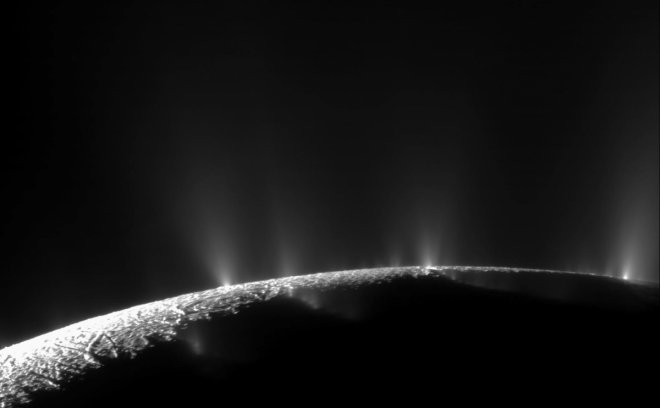
A research study on the model of Saturn's moon Enceladus has found that the gas giant's moon is an ocean planet which gets heated by tectonic activities in its core. According to the research which was based on the evidence brought by NASA's Cassini mission, the ocean world of the Enceladus gets hot as water gets into its porous core and reacts with the rocky minerals to form hot geysers.
Cassini had found geyser-like jets of water vapor and icy particles, including simple organics from fractures near the south pole of Enceladus. Further research has found that the moon had a global ocean below its icy crust. Multiple pieces of evidence proved that hydrothermal activity -- hot water interacting chemically with rock had been taking place on the seafloor of the moon.
The research found tiny rock grains which are products of hydrothermal activities at temperatures above 194 Fahrenheit (90 degree Celsius) are also found in the icy crust of the moon. Scientists believe that this temperature was not possible with the decay of radioactive elements.
Gael Choblet from the University of Nantes in France said that the rocky core which has 20 to 30 percent empty space between them rubs each other with the rotation of the moon to generate heat. The mineral-rich hot water from these porous cores "travels upward and gushes through the cracks in the icy surface."
It has been found that the thickness of the ice sheaths decrease as it melts from within due to continuous heating up. The average thickness of the ice is calculated as between 1 to 5 kilometers. The model shows that more cracks are to be found near the poles.
The Cassini mission which was launched in 1997 had made several crucial discoveries about the Saturn, and its moons. The global ocean of Enceladus and methane seas in the Saturn's largest moon, Titan were critical scientific findings. Cassini had plunged into the surface of Saturn on Sept. 15, 2017, when it faced scarcity of fuel.









